Table of Contents
Until a few years ago, most people didn’t know about the existence of Rainbow Mountain Peru. It was in the year 2015 when it was discovered and only from the year 2016 they started offering day tours to visit it.
It’s hard to believe that not long ago no one knew about this place, but now Rainbow Mountain has become a very popular destination for hikers visiting Peru. No doubt, Instagram has contributed to its popularity and many backpackers flock to this full day tour from Cusco to take photos of its iconic rainbow colored capes in hues of yellow, red and orange.
Rainbow Mountain, also known as Mountain Vinicunca or Mountain of Seven Colors, formed from melting ice and mixing with iron sulfide, oxide and other minerals in the soil, creating a rainbow-colored mountainous landscape. When the snow melted 5 years ago due to climate change, it instantly became one of the most picturesque places to visit in Peru.
General description of Vinicunca Rainbow Mountain Peru
Turquoise, scarlet and mustard-colored sediments extend through Rainbow Mountain, or Vinicunca, and give it its striking appearance. These different colored layers represent different mineral contents and were formed over millions of years before being exposed by tectonic movements and intense wind erosion in the high Andes. The mountain used to be covered by a glacier which has melted due to the effects of global warming. Subsequently, it became a popular excursion on the Ausangate Trek before shorter routes of 1 or 2 days were developed in recent years.
With an elevation of 5,200 meters above sea level (17,060 feet), Rainbow Mountain’s elevation is more than half that of Mount Everest. Those who wish to see this beautiful place for themselves should be prepared for a grueling 3-hour trek at great altitude. Weather conditions can also complicate travel, with extremely cold temperatures and intense UV rays due to elevation. But although getting there can be a bit tricky, the extraordinary view once you reach the top will make it worth it.
QUICK DATA:
- Altitude: 5,200 meters (17,060 feet) above sea level.
- Duration: 3-4 hours, depending on pace.
- Distance: 7 km.
- Difficulty: Moderate to difficult, depending on fitness level.
Rainbow Mountain Peru
All excursions to Rainbow Mountain depart from the city of Cusco, the ancient capital of the Inca Empire and the closest city to Machu Picchu and many of Peru’s most famous attractions. After leaving Cusco, your excursion will take you on a 2-hour journey south of the city to the village of Pitumarca. Not far from here is where you will find the Rainbow Mountain trail starting point to begin your hike.
History of Vinicunca
The story of how the mountain of colors was discovered is not very old. Earlier, snow covered the colorful lines of Vinicunca, however, due to climate change, the snow covering the hills melted slowly. Locals say the mountain was discovered in 2013 and since then, thousands of visitors who wish to have a glimpse of the multicolored mountain make the arduous trek to see the place.
Hike to Rainbow Mountain
The hike to Rainbow Mountain will generally take around 3 hours, depending on your speed and fitness level. The trail itself is mostly flat until the final ascent, but the great elevation is what makes it challenging. Due to the exertion that great altitude can cause on the body, it is generally recommended to walk at a relaxed pace (which anyway you will want to do in order to enjoy the natural beauty that surrounds you). For those who prefer not to hike, there are generally horses available to rent along the trail. However, they can only take you to the end of the flat part of the trail, where you will have to dismount and climb the final part on foot to reach the top.
The local people surrounding Rainbow Mountain also raise herds of llamas and alpacas, so you will have the chance to see many of these adorable creatures along the way. Once you reach the summit lookout, you will have breathtaking panoramic views of not only Rainbow Mountain, but also the nearby Red Valley (some extended hikes also walk through the Red Valley itself via an alternative trail to the mountain).
Don’t forget to take lots of pictures of this incredible landscape! Around the mountain, you will also have the chance to see other rainbow hills. Thanks to the interesting geography and geology of the place, there are many colorful mountains, although Rainbow Mountain is the most picturesque.
When is the best time to visit Rainbow Mountain?
The Peruvian Andes are subject to two distinct seasons: the dry season, which lasts roughly from April to October, and the rainy season, which lasts from November to March (January and February being the months of highest precipitation). April and October are also nice, as they are generally transition periods between seasons.
Due to its high altitude and frigid air, the rainy season in the region often turns into snow at Rainbow Mountain. Visitors to Rainbow Mountain should come prepared with clothing for all types of weather, as conditions can also change rapidly. For more information on when to visit, be sure to consult our blog on the best time to visit Peru.
What to take to the 7-Colour Mountain tour:
- A water bottle with enough water.
- Snacks for the hike (be sure to take any junk with you). There are also locals selling candy, water, soft drinks and small snacks near the starting point of the trail.
- Peruvian soles in lower denomination notes (S/.20 and S/.40) if you wish to pay for a horse ride.
- Comfortable walking shoes with good traction.
- A warm cap.
- Multiple layers of clothing to be prepared/for all weather conditions.
- Sunscreen and sunglasses. This is important not to forget, as the sun’s UV rays are very intense at high altitude.
- A camera to capture all the beauty of the Mountain of the 7 colors (Rainbow Mountain).
Additional things you should bring to the Rainbow Mountain hike
- Waterproof gear we had for hiking in Huayna Picchu (the stunning mountain right next to Machu Picchu).
- Our cameras.
- Water (2 liters per person).
- Chocolates (and other appetizers).
- Winter clothing: caps, fleece, sweaters, gloves, etc. (it gets cool in the morning, but warms up considerably in the afternoon).
- Sunscreen and lip balm.
- Toilet paper and wet wipes.
- Any personal medication.
- Shoes for hiking.
At what altitude is Rainbow Mountain? And what about the evil of height?
The possibility of experiencing altitude misconduct is one of the most common concerns for Rainbow Mountain visitors. The altitude evil is due to lack of oxygen at higher altitudes and can present at altitudes above 2,500 meters above sea level, which places the altitude of Rainbow Mountain at 5,200 meters, well above the minimum elevation where can occur.
Symptoms of altitude sickness (known as “soroche” in Peru) can include headache, vomiting, dizziness, fatigue and difficulty breathing. In rare cases, these symptoms can develop into more serious diseases. Due to the effort the heart makes with lower oxygen levels, people with a history of heart problems should not hike Rainbow Mountain. If you are unsure if you should hike Rainbow Mountain, be sure to discuss your concerns with a doctor before coming to Peru.
After you have discussed any health issues with your doctor and have decided that hiking Rainbow Mountain is safe for you, be sure to keep the following tips for your trip in mind:
- Always take the necessary time to acclimate to the altitude for a day or two before attempting to hike Rainbow Mountain or undertake any other strenuous physical activity.
- Check with your home doctor if there is any medication you can take to facilitate your acclimatization to high altitudes.
- Drink coca tea, an herbal remedy for altitude sickness used by locals for thousands of years.
- Avoid heavy meals, alcoholic beverages and smoking.
- Be sure to keep well hydrated.
To get more information about height sickness and how to manage its symptoms, be sure to consult our blog on height sickness in Peru.
How to dress appropriately for the Rainbow Mountain hike
To dress appropriately at Rainbow Mountain, it is important to take into account temperature fluctuations due to altitude. Sometimes, during hiking, the sun can be extremely intense, which can cause skin burns.
Due to this, it is necessary to apply high protection sunscreen generously. However, even with intense sunshine, a light breeze can cause temperatures to drop quickly, turning cold. That’s why, it’s important to have a jacket or two on hand to keep warm.
The key to dressing appropriately at Rainbow Mountain is to dress in layers. This will allow her to adjust her clothes according to temperature changes along the trek. You can start with a light t-shirt or blouse, then add a sweatshirt or light jacket and, if necessary, put a warmer jacket on top. It is also recommended to wear a cap and gloves to protect yourself from the cold.
In addition, wear comfortable and resilient hiking clothing, such as sport pants or leggings and hiking shoes with good grip. Don’t forget to bring enough water, lip balm and sunglasses to protect yourself from both the sun and dehydration.
In summary, the key is to dress in layers, be prepared to protect yourself from the intense sun and wear clothing that can be adjusted according to the changing temperature conditions at Rainbow Mountain.
Here are the essential items recommended to take with you:
- Hiking shoes or comfortable boots. The sandals will not serve!
- Windproof and waterproof jacket.
- A base layer other than cotton.
- A wide-brimmed hat.
- Bottle of water.
- A sweater or intermediate coat to wear on the lookout.
- A small daypack to carry everything.
Being prepared for all types of weather is key to enjoying this hike. If you desire more tips, be sure to read our guide on how to dress in layers for the cold weather.
A horse can be rented
For the truly exhausted, there was another option. The vendors followed the group, kindly offering horseback rides to the top for only 70 soles ($20 USD) per person, only one way. If you decide to do this, make sure you choose a healthy horse.
I know this is the way the local indigenous community gets revenue, but it is also our responsibility to make sure it is done humanely. For me, hiring a horse would have been like letting the mountain win, so I went ahead.
The famous viewpoint of Mount Vinicunca
Rainbow Mountain is a slab of changing colors: pinks, greens, grays and yellows embedded in a bank of rock rising from the Earth. It is known as the Mountain of the Seven Colors for a good reason. You can see all the colors in layers, forming a rainbow pattern.
The best time to visit Seven Colors Mountain is generally during the dry season, which runs from March to November. This period offers a higher probability of good weather conditions. However, it is important to check the weather forecast before your visit, as unexpected rain can lead to unfavorable hiking conditions.
If rain is forecast and you have little time in the Cusco area, it may be recommended to omit the Seven Colors Mountain to avoid a tedious and unpleasant experience.
In terms of difficulty, scaling Seven Colors Mountain depends on your level of fitness and how acclimated you are to altitude. The hike is approximately 2.5 miles (4 km) one way, with a round trip of approximately 4.5-5 miles (7-8 km) and an ascent of around 3937 feet (1200 meters).
If you are already acclimatized and in good physical shape, the hike is not too difficult. Although it’s possible to get breathless and tired, most of the trail is relatively flat. The steep section begins in the last 1000 feet (300 meters) of ascent. Take your time, watch slowly and enjoy the views. The descent is usually easier and takes around 45 minutes to an hour.
It’s crucial to be prepared for altitude, as it can significantly affect your experience. The Seven Colors Mountain lookout is located at 17,060 feet (5200 meters) above sea level, and the hike starts around 13,779 feet (4200 meters). In comparison, the summit of Mount Kilimanjaro in Africa, which is significantly higher, takes several days to ascend.
Bad altitude is a real concern and many people have difficulties during this hike. It is essential to follow the advice to acclimate to the altitude in Cusco and make sure you are in good physical shape. Give yourself a few days to adjust to the elevation by exploring other attractions such as Machu Picchu and the Sacred Valley before attempting the hike to the Seven Colors Mountain. This will enhance your experience and make it more enjoyable.
Frequently asked questions
Below, you’ll find answers to some of the most frequently asked questions about hiking to Peru’s most colorful mountain.
HOW IS THE ROAD TO SEVEN COLORS MOUNTAIN?
The trail begins with a gradual and uniform incline through a valley until you reach a steeper climb towards Seven Colors Mountain.
To get the classic view, you must climb up a steep slope of compact, hard earth that faces the Mountain of the Seven Colors. Due to the slope being abrupt, the terrain can become slippery when wet. From the summit, you will be able to watch the colors glide down the mountain and enjoy stunning views of lush green landscapes fading into snowy mountain peaks.
HOW DIFFICULT IS THE HIKE TO SEVEN COLORS MOUNTAIN?
Many people don’t realize in advance that Seven Colors Mountain is a high altitude hike. The altitude, more than the incline of the trail, increases the challenge level of the hike. The starting point of the trail is located around 4,300 meters (14,000 feet) and reaches just over 5,000 meters (16,400 feet). Many people have difficulties and end up paying for a horse ride offered by one of the locals walking along the trail.
HOW IS THE CLIMATE?
The climate at Seven Colors Mountain is very unpredictable and changes with frequency and rapidity. You can experience a warm climate and clear skies one moment, and the next, overcast and snowy skies. The best thing is to make sure you are prepared for any weather by wearing layers of clothes.
ARE THERE BATHROOMS ALONG THE WAY?
There are very basic toilet facilities along the way. These bathrooms are very rustic, but are the only option available in such a remote area. Be sure to carry a roll of toilet paper with you, just in case.
DO YOU RECOMMEND A 1 OR 2 DAY TOUR?
A 1 day tour to the Seven Colors Mountain turns out to be a very long day. The pick-up in Cusco is very early, at 3 am, then there is a 3-hour journey to the starting point of the trail, and after several hours of walking, the return journey takes place.
This can be very exhausting even for those in excellent physical shape, so for those who have time, taking a 2-day tour can be a good idea. The itinerary of the 2 day tours is more slow and pleasant.
Not only does it split up the long round trip to Cusco, but camping closer to the Seven Colors Mountain allows you to better adapt to the altitude than in Cusco, which makes you feel better during the trek.
Why is the mountain of the seven colors in Peru colorful?
The mountain’s colors come from rich mineral deposits compressed into layers over millions of years. The red layers contain iron oxide, while the oxidized limoncello gives some layers a brown tone. The chlorite provides a greenish hue in other layers, and finally, iron sulphide is what makes the yellow layers of the Seven Colors Mountain yellow.
Tips for visitors:
- Once you reach the base of Seven Colors Mountain, where most tourists take pictures, try climbing the hill behind the first viewpoint to have less crowded views.
- Be sure to leave early to avoid the larger crowds; the earliest tours leave between 2am and 3am.
- The weather at the top of Seven Colors Mountain can be unpredictable, so be sure to bring a windbreaker and sunscreen in case conditions change.
- Feel free to rest and listen to your body while completing the hike. The height of the Mountain of the Seven Colors is above the altitude of Cusco.
How to get to Rainbow Mountain?
To reach the starting point of the Mountain of the Rainbow Trail in Qesoyuno, you must drive for three hours from Cusco. From there, you will start a trek that will take approximately three hours. Due to the difficult terrain and altitude, the hike is expected to be challenging, so traveling with a guide is recommended. If you don’t spend a few days in Cusco getting used to the altitude, you run the risk of suffering altitude sickness during the trek, which can be dangerous.
What is the best time to visit Rainbow Mountain?
The colors will present rain or make sun, but the photos you get on a sunny day will always be better, as the colors will look more defined under direct light. You can increase your chances of finding the mountain on a good day if you plan your trip during the warmer months, between November and March. During this period, it is less likely that there will be snow and rain, which also makes travel to the site easier.
How to get the best image of Rainbow Mountain?
While the mountain is undoubtedly beautiful, it rarely compares to the exaggerations seen online or in travel brochures. The colors will be much softer than the most popular social media posts
For the best photo, start your trek in the early hours of the morning or dusk. Not only will the temperatures be pleasant
What colors are found in the mountains of the Rainbow in Peru?
- Pink: The mixture of red clay, clay and sand produces a beautiful smiling color.
- White : This rich and clayey layer is rich in calcium carbonate like quartz and sandstone.
- Greens and blues (turquoise): Iron and magnesium rocks and phyllites, a fine-grained metamorphic rock, are responsible for some of the most striking colors.
- Creepy browns: eroded rocks and magnesium add depth to the color palette.
- Yellows: Sandstones and limestones, enriched with sulfides, form striking gilt bands.
When was the Rainbow Mountain discovered in Peru?
The colors of the Mountain of the Rainbow in Peru were discovered about ten years ago; The exact date is unknown, but most agree it was between 2012 and 2015 when it caught international attention. Climate change caused more snow to melt in the high parts of the Peruvian Andes, revealing Vinicunca’s full color repertoire to the world.
The Mountain of the Rainbow is located at a very high altitude, approximately 5,200 meters above sea level, and is a three-hour drive southeast of Cusco. The lack of vegetation helps showcase their colors to the world.
Do people adore Peru’s Rainbow Mountain?
Vinicunca is located in the heart of Ausangate and Cusco.
Before climate change melted the snow, people carved ice from mountain glaciers and transported it for use in Cusco. Today, the inhabitants of the area offer offerings to the Apu and other mountains in the area.
What is the weather like in the Rainbow Mountains in Peru?
The high altitude of the Rainbow Mountain means visitors should be prepared for the four seasons in a day and for any weather eventuality.
Morning and evening temperatures can drop rapidly below freezing point. Conditions can change quickly from a strong Andean sun to rain or snow.
The dry season is the best time to visit the Peruvian Andes. The months of April to October are the best, with clear and blue skies very likely. The intervening months of March and November can also be good. You can consult the weather forecast for more information.
December, January and February are the wettest months. In addition, you should be prepared for changing mountain weather, low clouds, rain and even snow, no matter when you visit. And most importantly, don’t forget sunscreen, as the Andean sun is strong.
Do I need to acclimatize to visit Peru’s Rainbow Mountain?
Yes, it is necessary to properly acclimate to the altitude before visiting Peru’s Rainbow Mountain. This is due to the fact that the lookout is located at about 4,954 m above sea level, which is very high.
We recommend spending at least four nights in Cusco or a similar location just before visiting the mountain, ideally with excursions to altitudes higher than those in Cusco. Drink plenty of water, eat light meals, avoid caffeine and alcohol, and drink coca tea.
Share on your social network




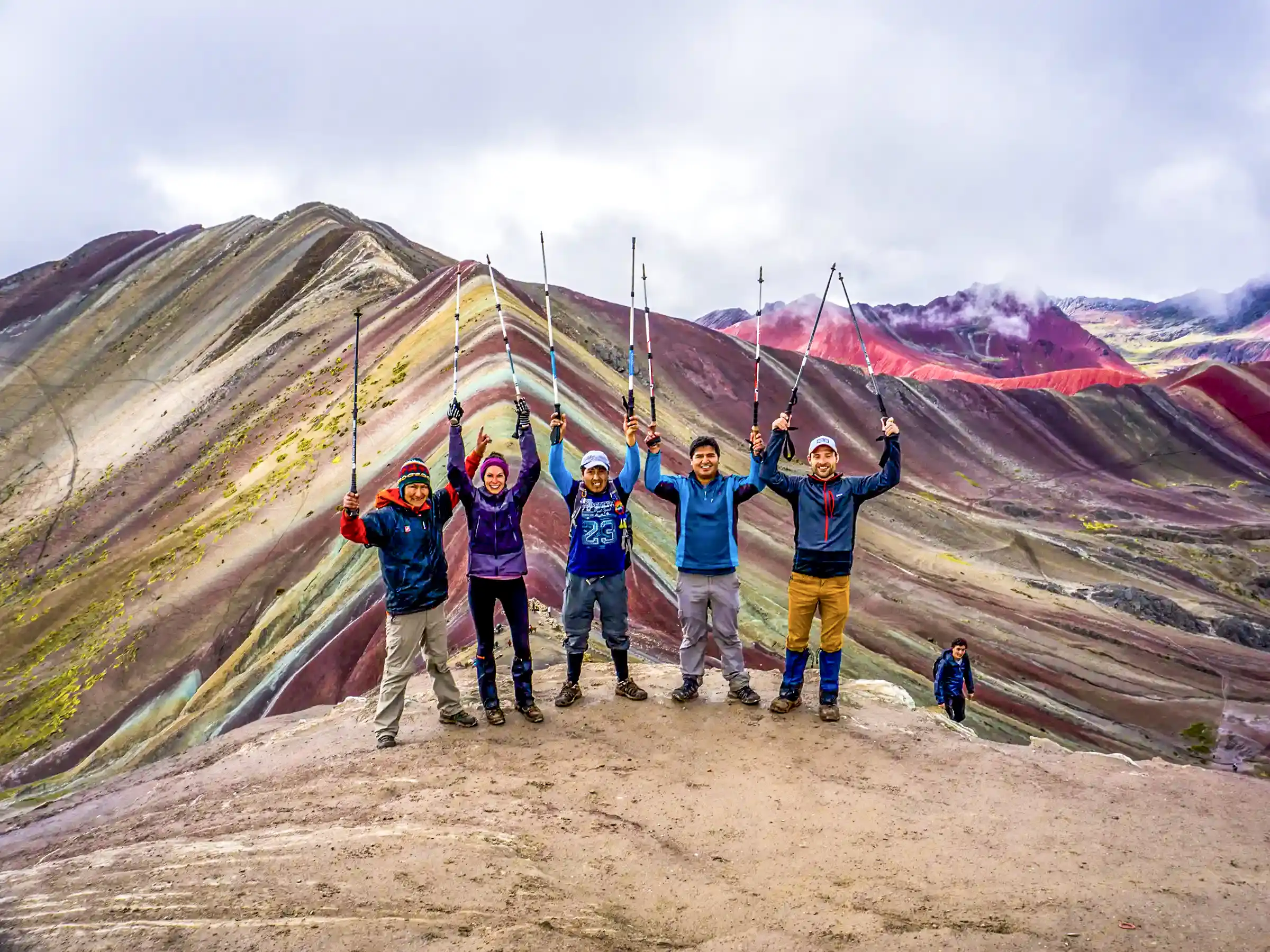
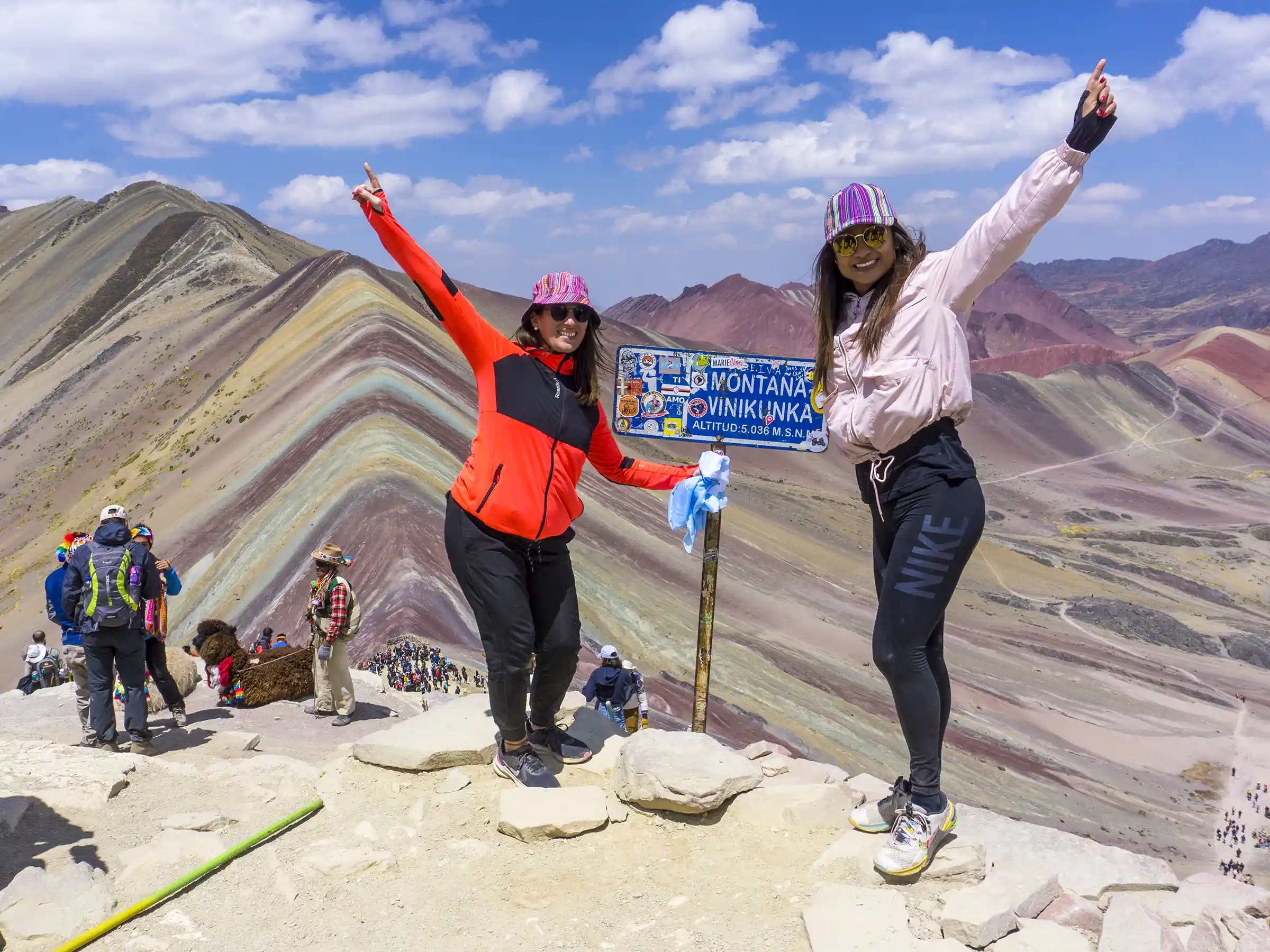
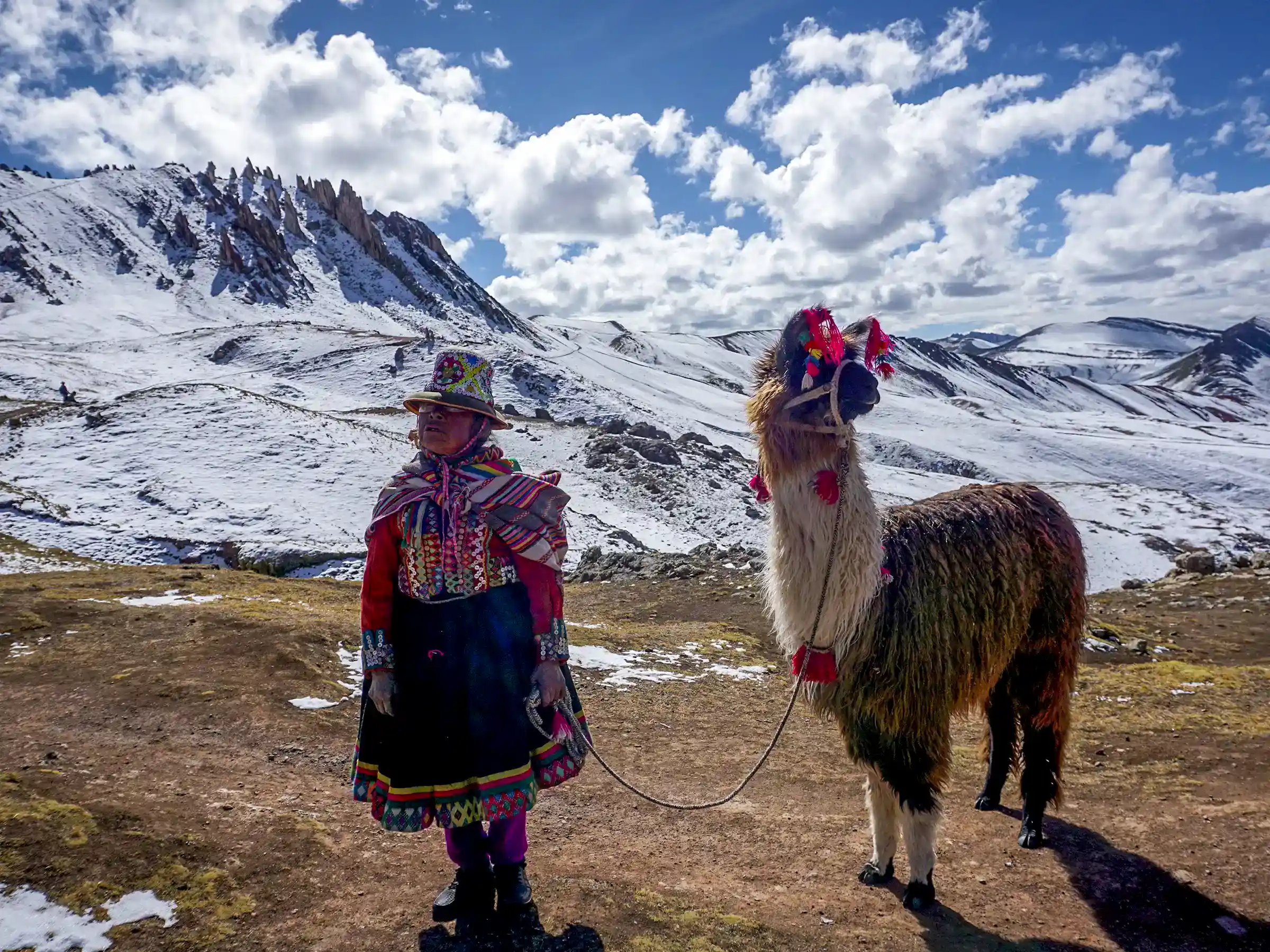
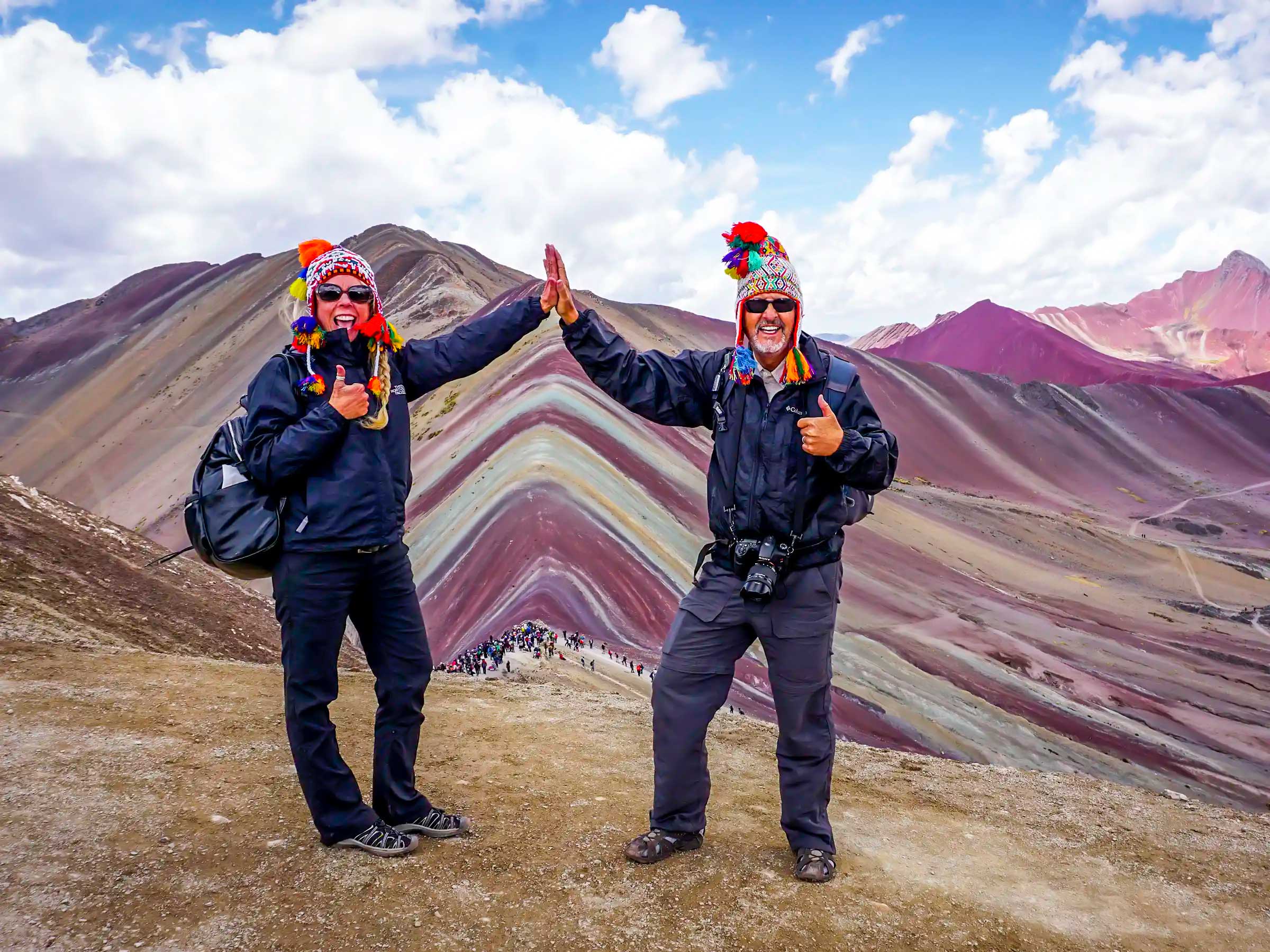
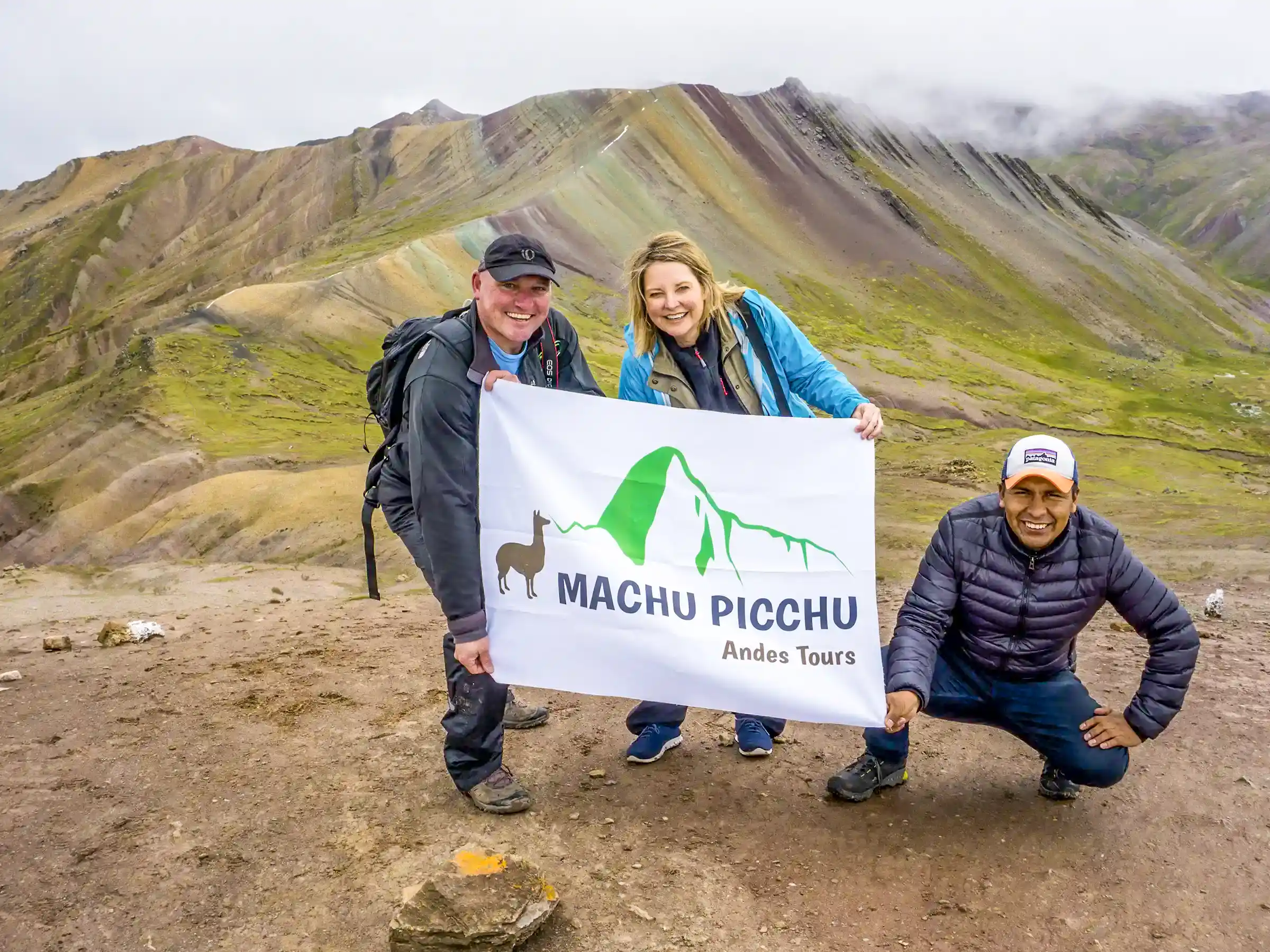
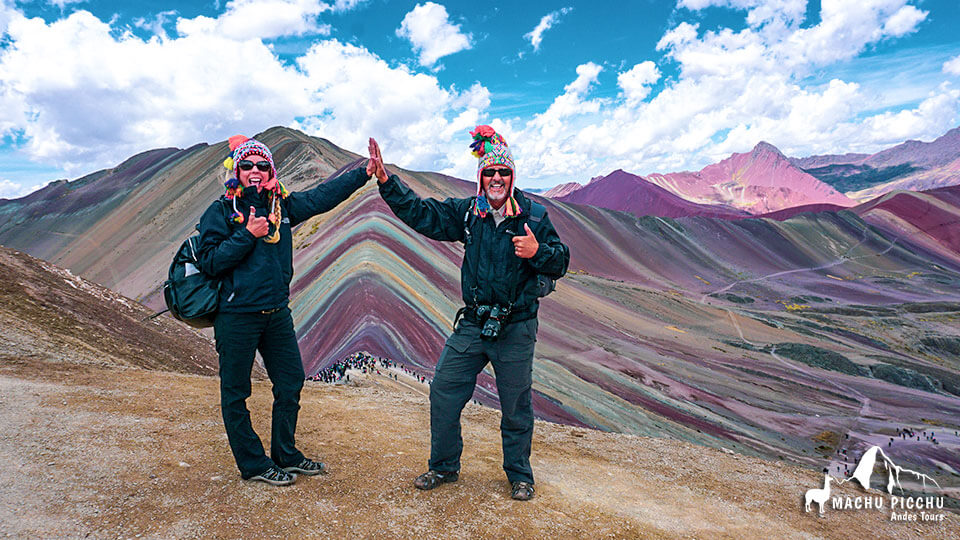
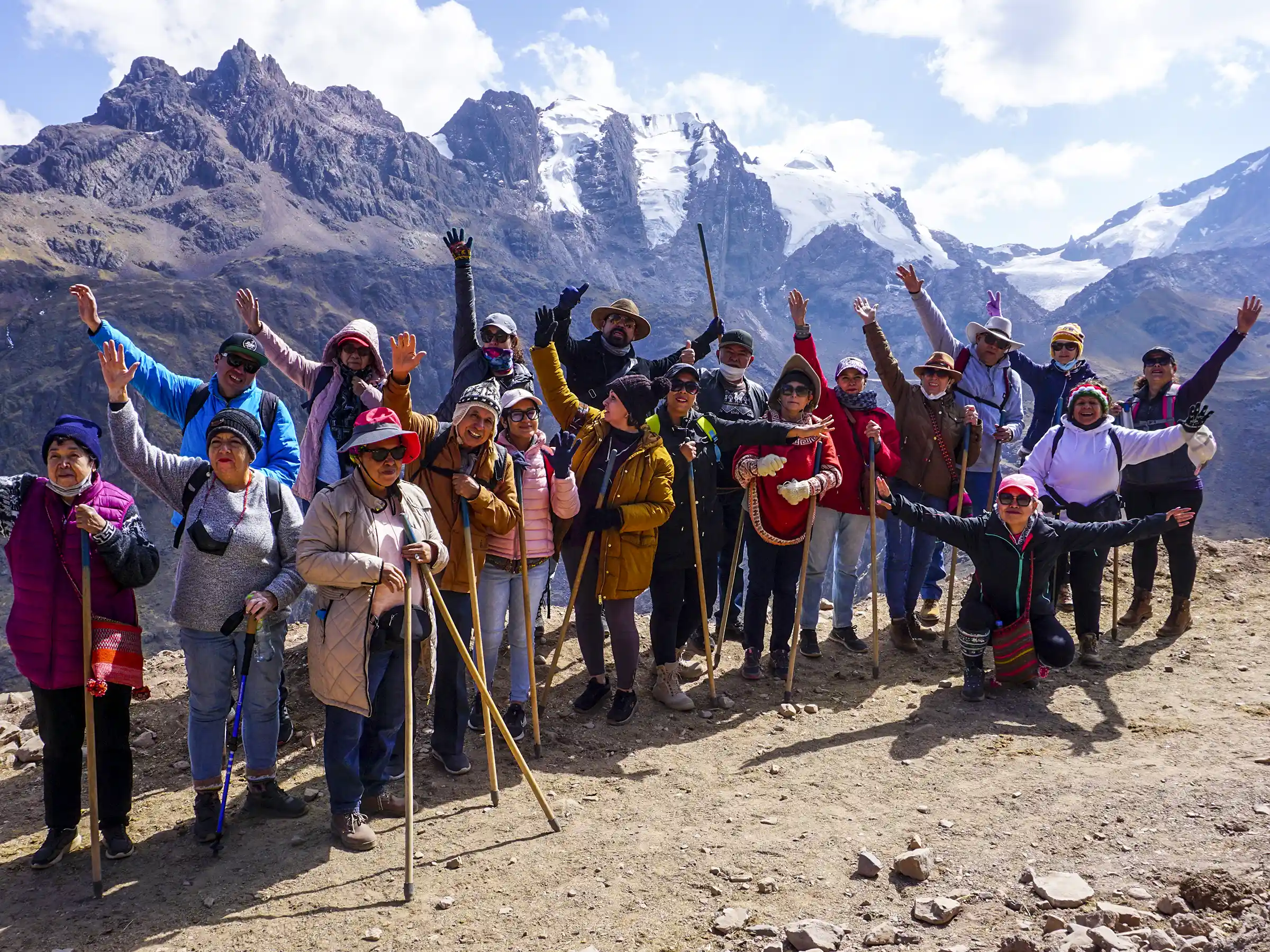
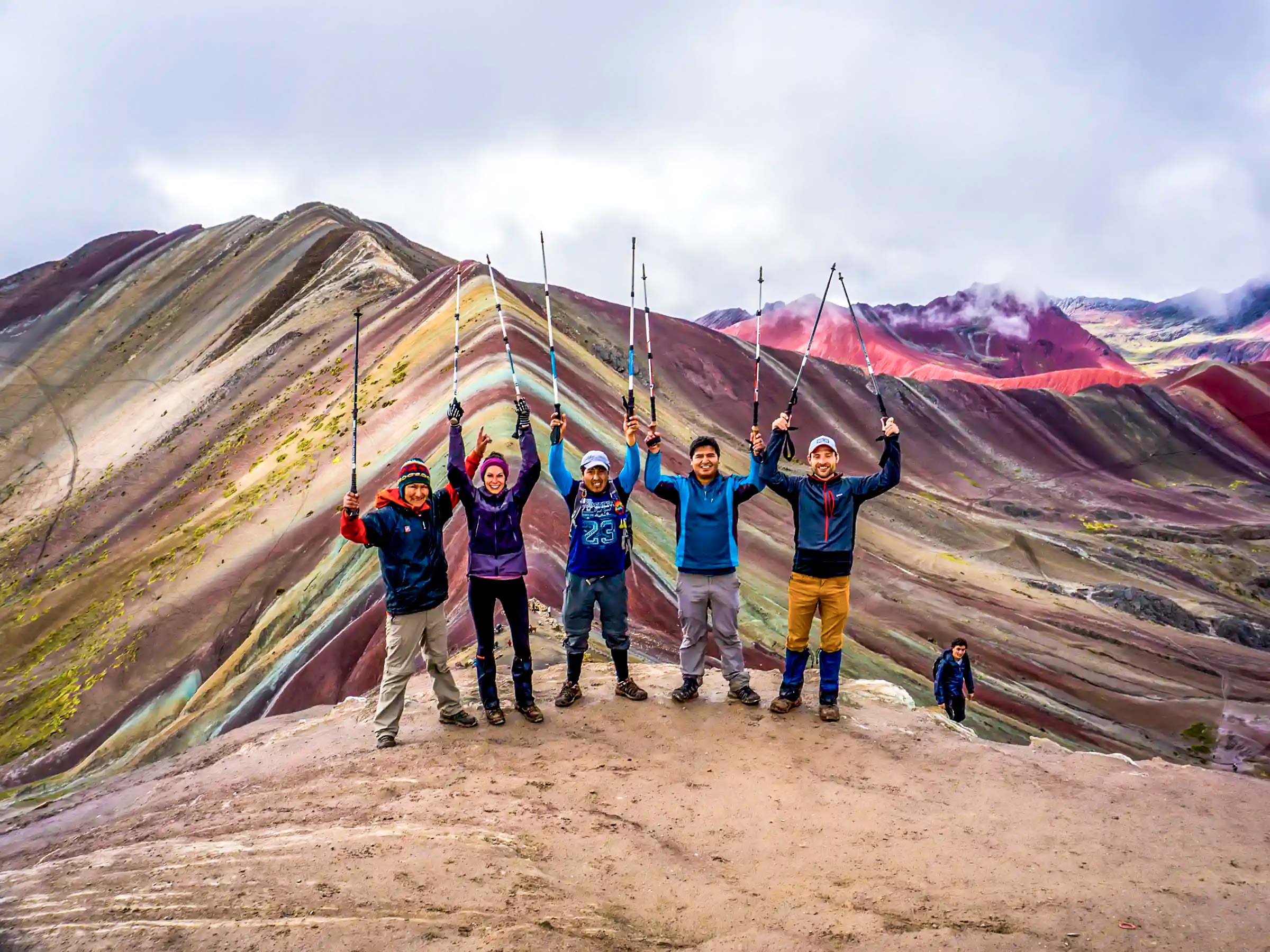
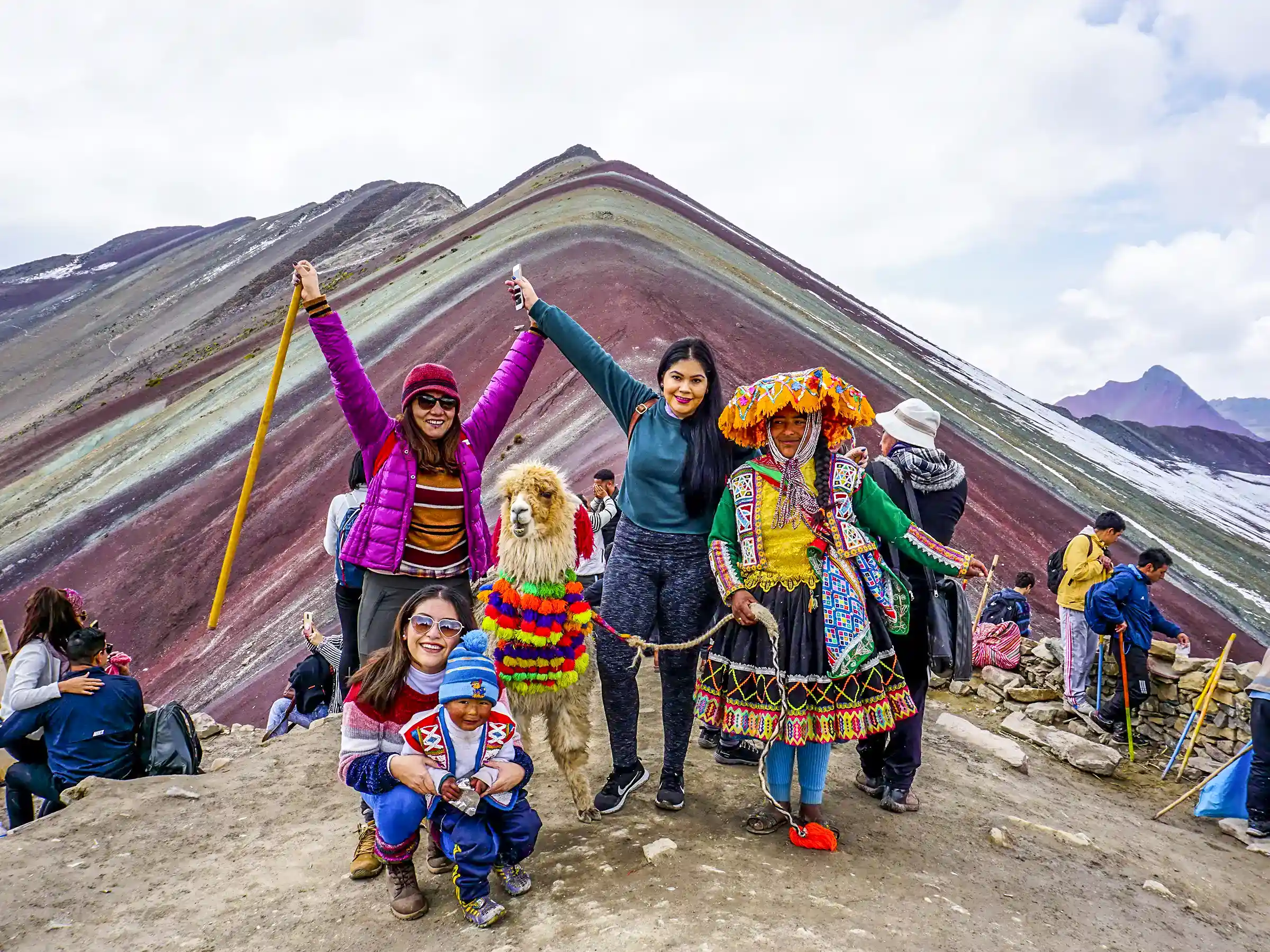
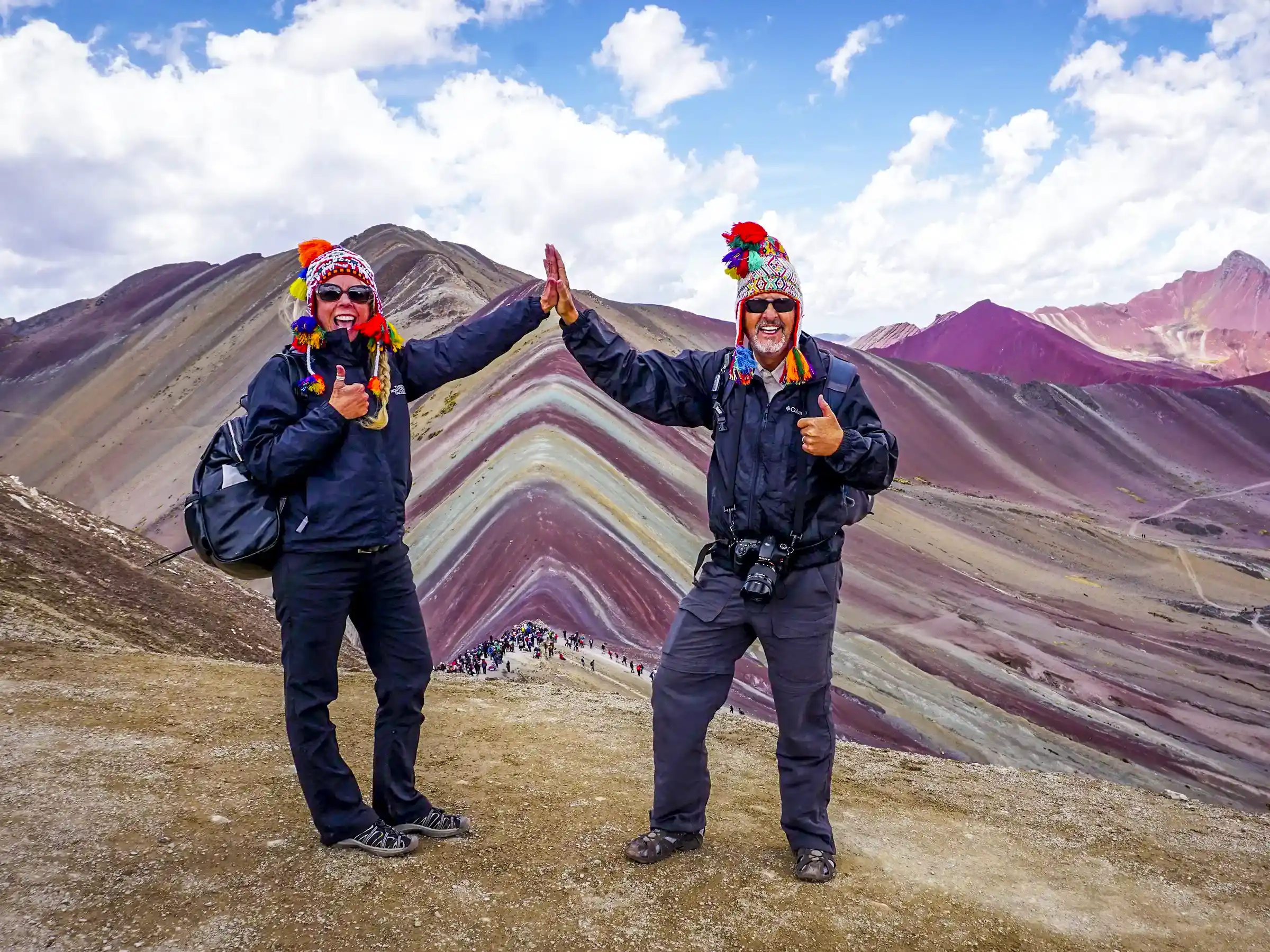









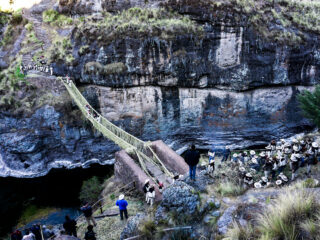

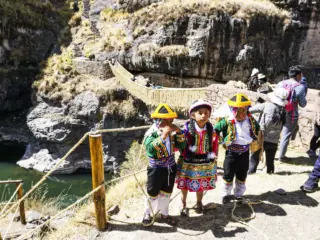





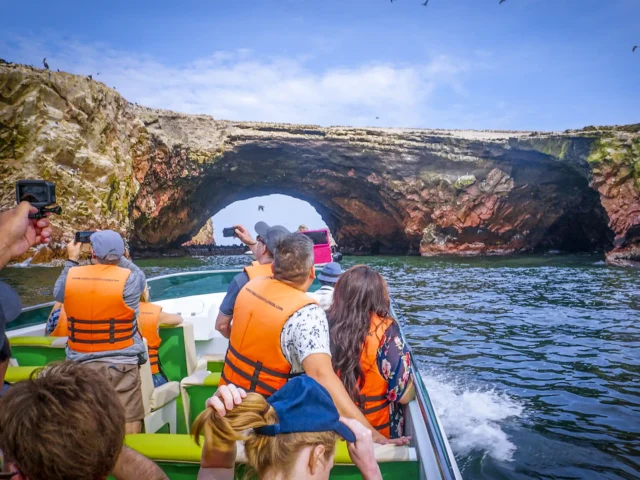



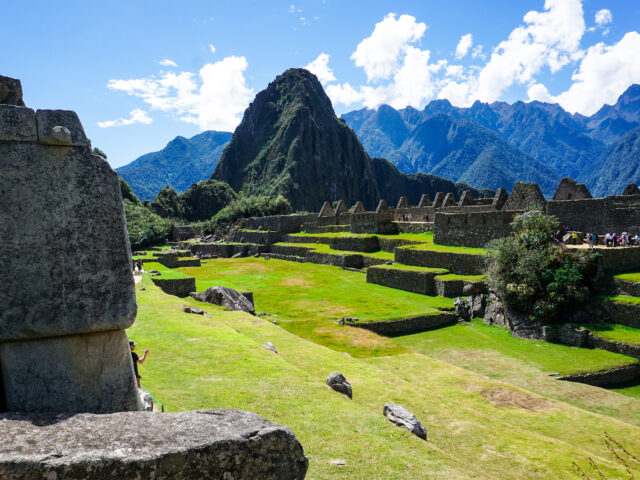




No comment yet, add your voice below!